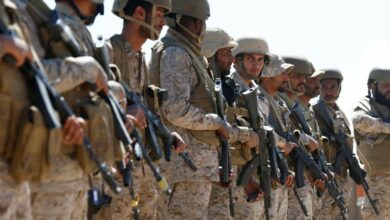What is Hajj? A step-by-step guide to the Muslim pilgrimage

Every year, millions of Muslims from around the world gather annually in Mecca to perform Hajj – the sacred Muslim pilgrimage.
Hajj became obligatory for every able-bodied Muslim adult who has the financial means to do after Prophet Muhammad’s “farewell pilgrimage” in 632 AD.According to Islamic tradition, the Kaaba – a black silk-clad stone structure at the heart of the Grand Mosque in Mecca – was built by the Prophet Abraham and his son Ishmael.
Every year, between two and three million people participate in the pilgrimage.
However, due to the coronavirus pandemic, there were only 10,000 pilgrims in 2020. The following year saw 58,700 pilgrims, and last year’s numbers picked up again to one million.
Hajj is a spiritual, emotional and physical challenge that tests the patience and temperament of the pilgrim.
It occurs in Dhul-Hijjah, the 12th and final month of the Islamic lunar calendar, between the eighth and 13th days of the month.
This year, Hajj is taking place between June 26 and July 1. Here is a step-by-step guide to the rituals on each day:
Entering ihram entails wearing plain garments – two unstitched pieces of cloth for men, or loose-fitting clothing for women – as well as following certain rules, such as not giving in to anger or engaging in sexual activity.
Pilgrims then perform tawaf, which means circling the Kaaba in an anticlockwise direction seven times, and sai, which refers to running between the Safa and Marwa hills.Mina, the tent city – After that, the pilgrims travel by foot on pilgrim paths or take a bus for the 8km (five-mile) journey to Mina, a tent city just outside of Mecca.
The pilgrims spend the day in Mina, setting out the next morning at dawn. Most of the time in Mina is spent in prayer, supplications and remembering Allah (God).
Day 2
A day on Arafat – The Day of Arafat is considered one of the most important days, not just of Hajj, but of the Islamic calendar. After making the 15km (nine-mile) journey from Mina, pilgrims spend the day at Mount Mercy in reverent prayer.
This is known as wuquf – the act of standing before Allah from noon to sunset.
The site is particularly revered as the place where the Prophet Muhammad delivered his last sermon.










